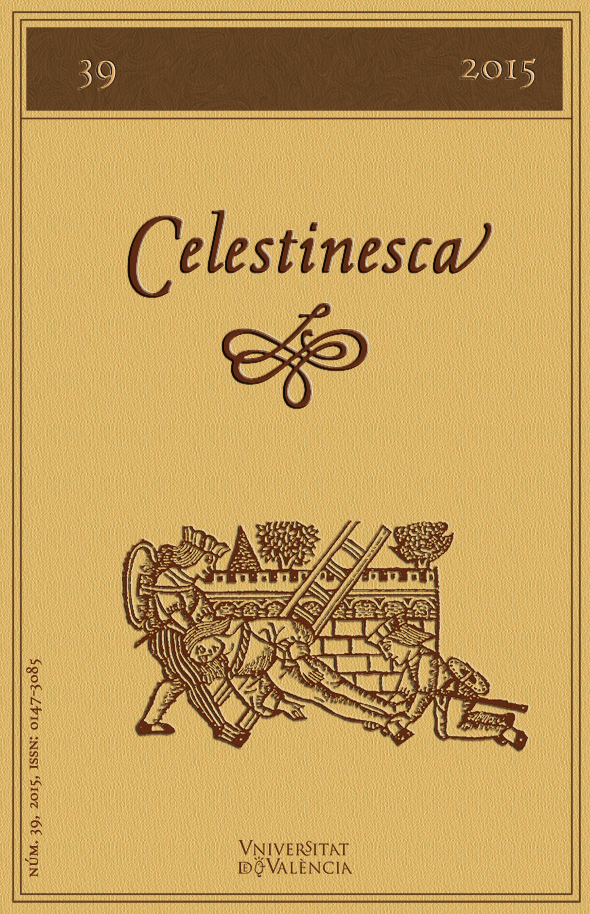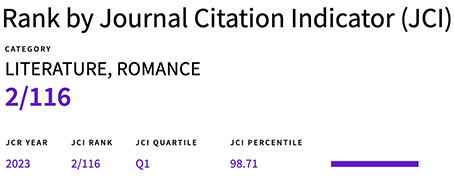Gestures as a Transnational Language through Woodcuts: Celestina ’s Title Pages
DOI:
https://doi.org/10.7203/Celestinesca.39.20181Keywords:
Celestina, iconography, gestures, performance, theater, visual culture, title pages, early woodcuts Abstract
Abstract
Following the 1499 publication of the Comedia de Calisto y Melibea, Celestina became among the most profusely illustrated sixteenth-century books. This article analyses the body language featured in the title-page woodcuts of its early editions. Conceiving the woodcuts as belonging to a particular historical time, the study confirms that most contemporary printers conceived the work as part of a dramatic iconographic tradition and were openly concerned with the legibility of illustrations that would help readers understand the text. Printers and engravers enjoyed certain flexibility as they summarized the plot of the (tragi)comedy and codified emotions on the page, while operating under three distinctive iconographic programs: the lovers' encounter in Melibea's garden, Celestina depicted in Melibea's bedroom, and a condensation of the plot on a theatrical stage pop-ulated by groups of figures and successive actions. In these, changes in body language or the depiction of the scene convey different readings of the characters' intentions and inner feelings.
 Downloads
Downloads
Downloads
Published
How to Cite
-
Abstract547
-
PDF (Español)200
Issue
Section
License
![]() Celestinesca is committed to the dissemination of knowledge, that is why access to its contents is free and is ruled by a Creative Commons Attribution-NonCommercial-NoDerivatives 4.0 license.
Celestinesca is committed to the dissemination of knowledge, that is why access to its contents is free and is ruled by a Creative Commons Attribution-NonCommercial-NoDerivatives 4.0 license.
Authors retain the rights to their works. Therefore, they can disseminate them and deposit them in the repository, institutional or not, that they wish. However, they are kindly requested to do so by providing the full bibliographic reference and the corresponding DOI.
Celestinesca does not charge authors for submitting, processing, reviewing or publishing their articles.





